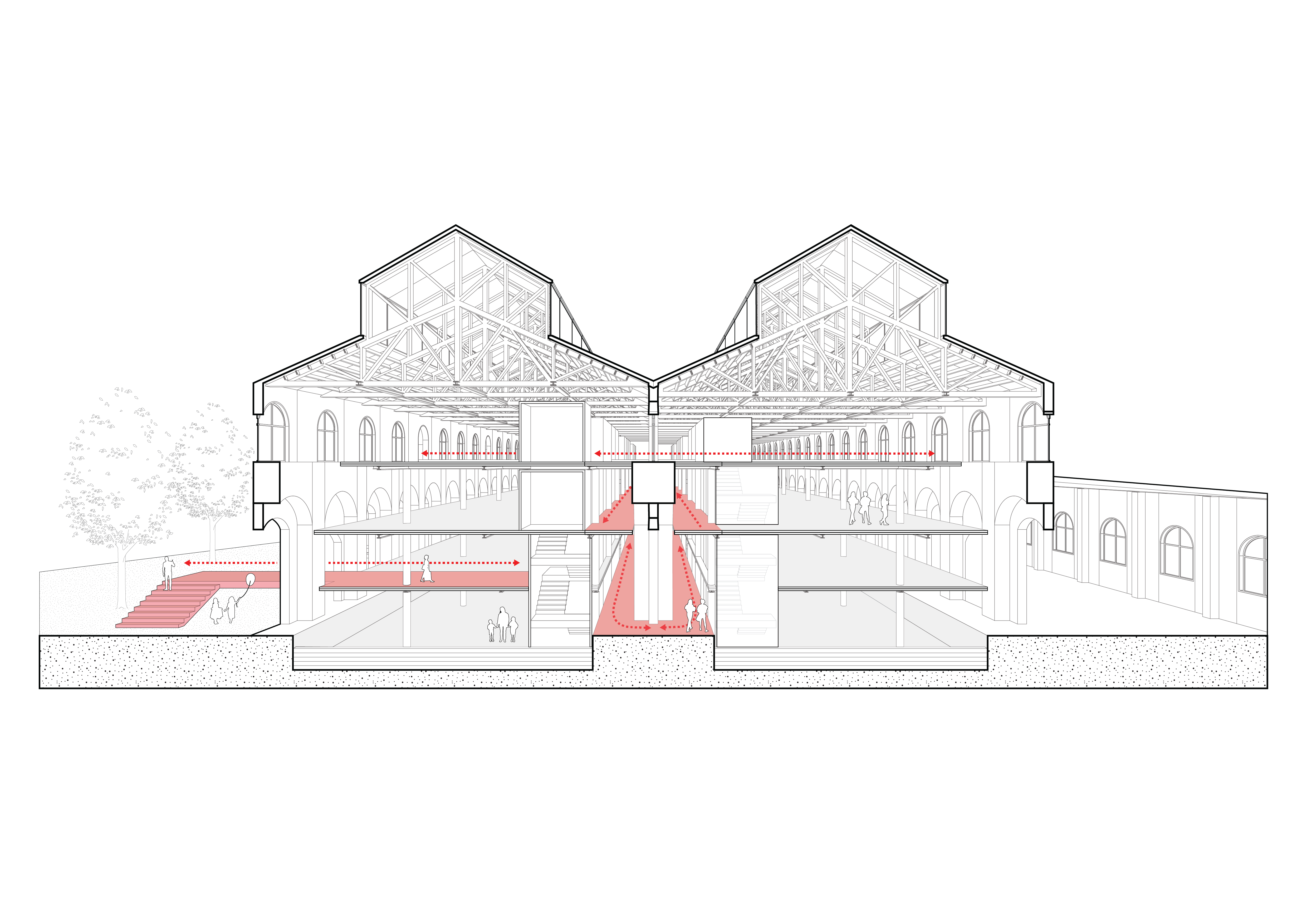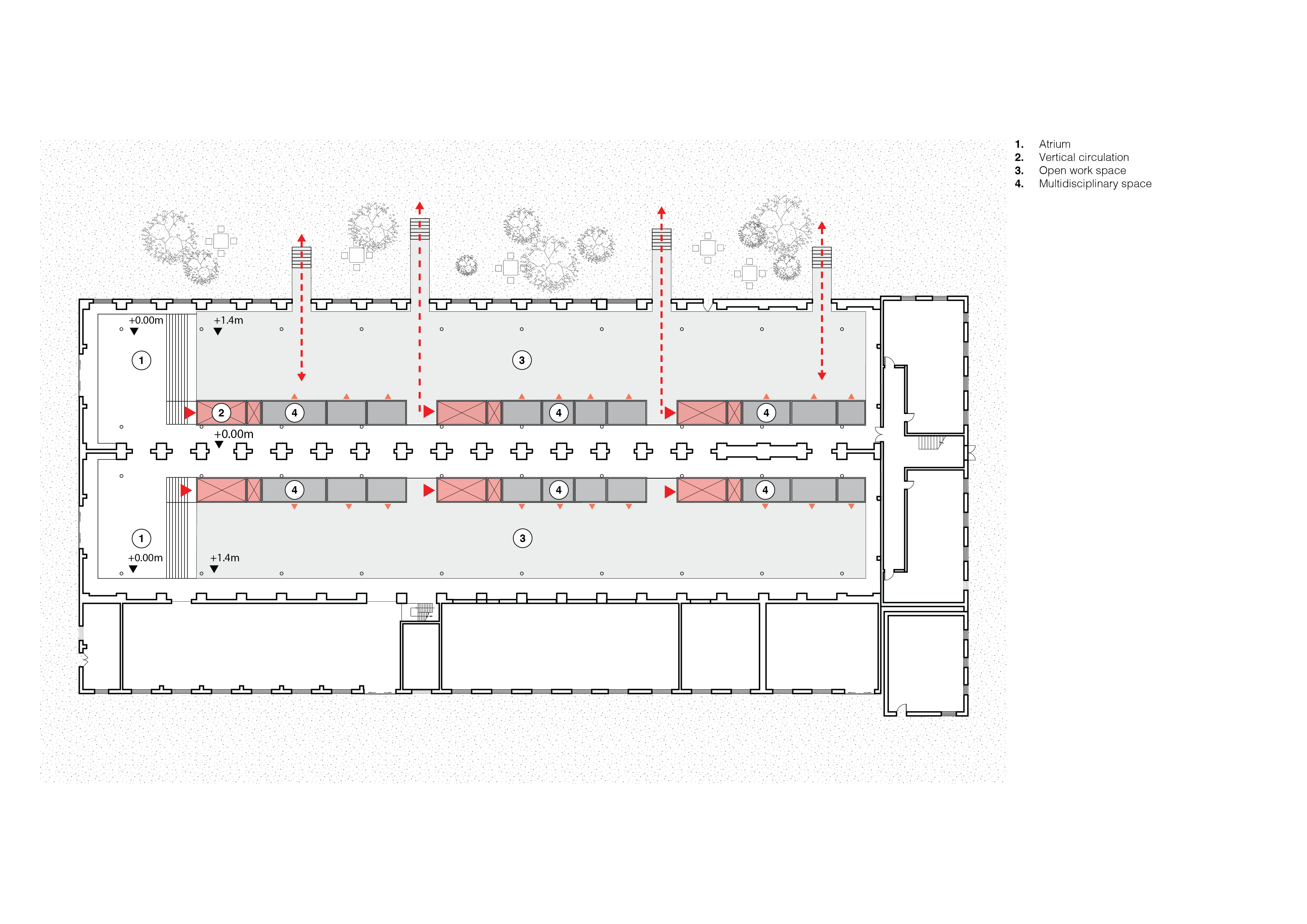Factory Shangba

Superimpose designed the transformation and re-use of an old factory in the north of Beijing to be a coworking, gathering and meeting space for nearby and young new businesses. The client asked for a innovative design which meets a very high floor area requirement, which Superimpose managed to achieve by digging through the existing ground floor slab, creating the possibility for the client to maintain the existing appearance of the factory, without having to build add-ons, whilst meeting the GFA requirements making it into a profitable project.
By keeping a distance of two meters from the façade, Superimpose detaches the newly built structure from the existing factory façade and structure, emphasizing the difference between existing and newly-build structures. Also, it places the corridor of 2 meters at the periphery of the building, which will let large amounts of daylight to spill onto all floors of the co-working space. The corridor on the ground floor also creates a set-back which allows for the semi-basement excavations. Bridges connect the floors of the two adjacent factories and also ‘punch’ through the exterior façade layer, encouraging people to have breaks on one of the exterior balconies, or to invite people to walk in from multiple directions.
The corefunctions of the building are situated at the most dark and centrally located place. These cores will be where the washrooms, lifts, stairs, printing areas, pantries and meetings spaces will be situated. By doing this, all MEP and ductwork can be minimized, reducing building costs and the visual impact of the MEP and ductwork on the appearance. At the entrance of the building, a large space will be left open to function as a gathering space and auditorium. By doing that, the building reflects the coworking attitude upon entering the building.
As previously proven in the Re-Veil project in Changzhi, Superimpose strives to find ways of turning old and assumably less usable or profitable structures into up-to-date and visionary examples of adaptive re-use.

Superimpose designed the transformation and re-use of an old factory in the north of Beijing to be a coworking, gathering and meeting space for nearby and young new businesses. The client asked for a innovative design which meets a very high floor area requirement, which Superimpose managed to achieve by digging through the existing ground floor slab, creating the possibility for the client to maintain the existing appearance of the factory, without having to build add-ons, whilst meeting the GFA requirements making it into a profitable project.



01/25
We use cookies to improve your experience. Choose which categories you want to allow. Essential cookies are required for the site to function.
Required for basic site functionality. Always on.
Anonymous usage and performance measurement.
Personalisation and third-party embeds (e.g., maps, video).